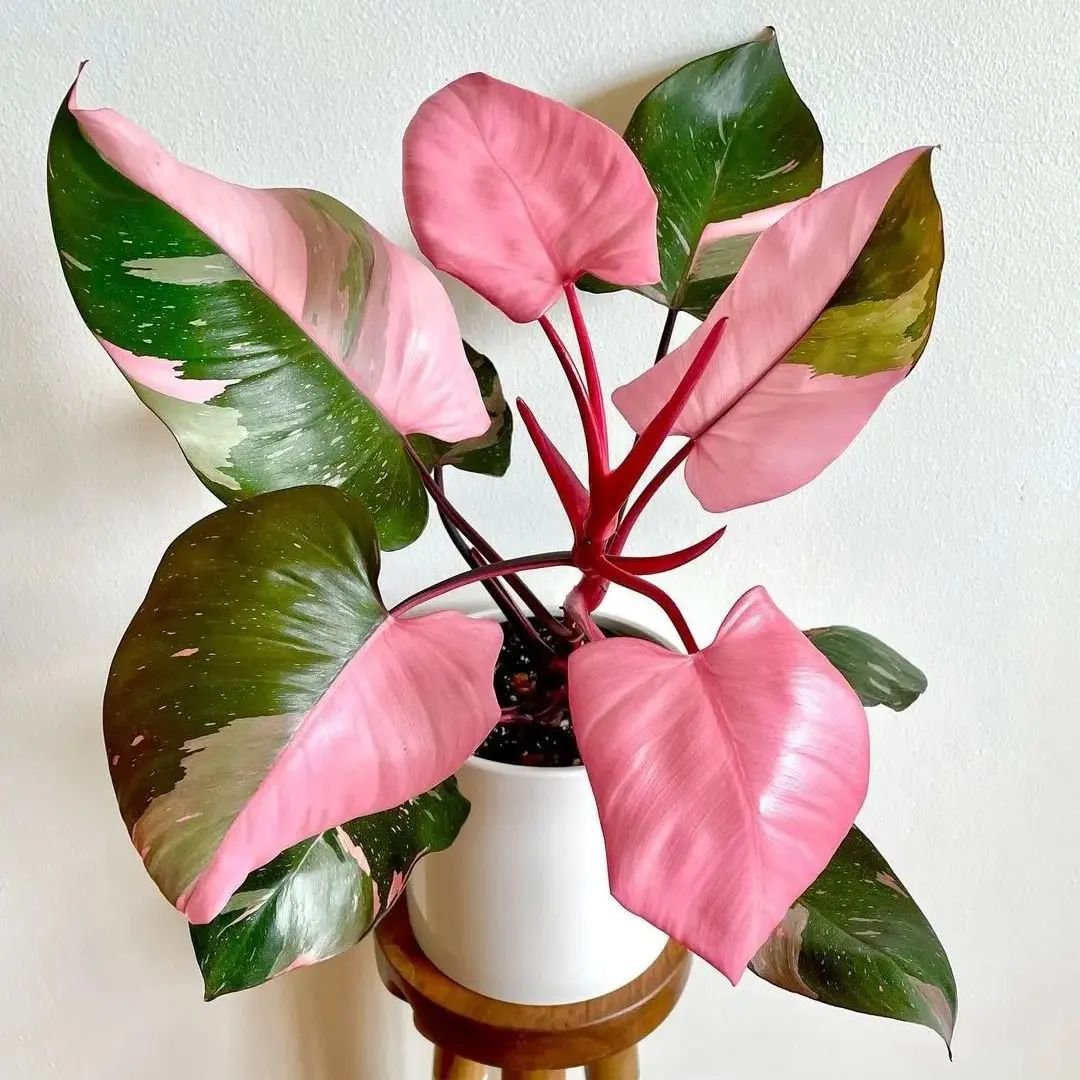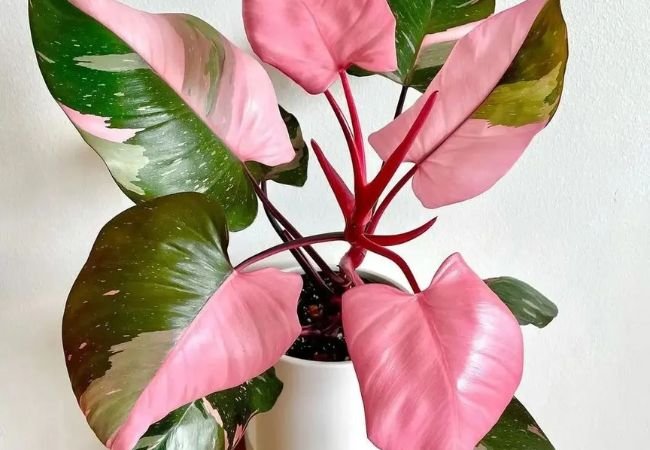Follow these 7 easy tips to grow a lush, vibrant Pink Princess philodendron. Learn the ideal conditions for this trendy houseplant from soil and light needs to watering, fertilizing and troubleshooting common care issues.
The Pink Princess philodendron took the houseplant world by storm in recent years with its eye-catching neon pink variegation. This hybrid of the classic heartleaf philodendron is prized for its splashy foliage and relatively easy care, as long as you provide the right growing conditions.
If your Pink Princess isn’t looking its vivid best, make sure you’re following these simple secrets for optimal growth and coloration.
Here’s a detailed information chart for the Pink Princess Philodendron:
| Aspect | Details |
|---|---|
| Botanical Name | Philodendron erubescens ‘Pink Princess’ |
| Common Names | Pink Princess Philodendron |
| Plant Type | Perennial, evergreen, climbing vine |
| Zones | USDA Zones 9b-11 (grown as a houseplant in cooler zones) |
| Exposure | Bright, indirect light |
| Bloom Time | Rarely blooms indoors |
| Height/Spread | 2-4 feet tall indoors, 2-3 feet wide |
1. Go Chunky with the Potting

Mix While philodendrons can adapt to various soil types, the Pink Princess variety thrives best in an extra chunky, well-draining potting mix. Soggy, dense soil leads to root rot and dull, faded leaves.
Use a mixture made for orchids, bromeliads or epiphytes—plants that grow on trees with their roots exposed to air. These blends contain large particles like perlite, orchid bark, charcoal and peat or coir fiber to create airiness and fast drainage.
You can also make your own chunky mix with one part standard potting soil combined with two parts orchid mix or equal parts peat/coir and chunky ingredients like perlite, small lava rocks, or LECA.
2. Bright, Filtered Light is Best
While the neon pink leaves may seem like they’d thrive in full sun, too much direct light can scorch and fade the Princess’ vibrant variegation. Bright but diffused light is perfect.
An east or west-facing window is usually ideal, or set the plant several feet back from a sunny south exposure. Sheer curtains or a shaded patio can also provide the right bright, filtered rays.
If the leaves start looking washed out or pale green, increase light exposure a bit. But protect from direct afternoon sun, which can burn the delicate pink areas.
3. Prioritize Good Air Flow
Air circulation is key to preventing disease issues and keeping the Pink Princess‘ foliage looking its best. Stagnant, stale air can lead to problems like leaf spot diseases or pest infestations.
Set plants apart from walls and use a small fan to keep the air moving around the leaves if needed. Crowding too many houseplants together can reduce airflow as well.
As the philodendron matures, prune out any tightly clustered stems and leaves to open up the plant’s interior. This improves air flow within the canopy.
4. Be Mindful with Moisture
Finding the right balance of moisture is crucial for these tropical plants. Let the top inch or so of the chunky potting mix dry out between waterings.
Then saturate the entire root zone thoroughly until water runs freely from the drainage holes. Empty any excess from the saucer or cachepot.
Overly dry conditions cause the Princess to wilt, dropping leaves. But sitting in soggy soil leads to yellow leaves, root rot and other fungal issues.
Pay attention and adjust your watering frequency based on your home’s environment and the season. Philodendrons need more moisture when actively growing, but far less when dormant in winter.
5. Feed It Like a Queen
The blushing Pink Princess is naturally a heavy feeder that thrives on rich nutrients. Use a balanced liquid fertilizer and apply every 2-4 weeks during the prime spring and summer growing seasons.
Slow-release granular fertilizers or organic options like worm castings, compost or fish emulsion work well too. Just be sure to reapply frequently, as the plant’s rapid growth rate quickly depletes nutrients.
Don’t overfeed in winter when growth slows down. This can lead to fertilizer buildup in the soil and potential root burn. Resume regular feeding in early spring.
6. Provide Consistent Humidity
These philodendrons originate from steamy tropical rainforests, so maintaining moderate humidity around 50-60% is ideal for lush, colorful growth.
Use pebble trays, humidifiers or group plants together to raise ambient moisture levels. Dry air causes leaf edges to crisp and brown.
Misting the leaves also helps temporarily boost humidity. But don’t allow moisture to stand on the leaves long-term, as this encourages fungal pathogens.
7. Rotate for Even Growth
As the plant grows larger, rotate the pot a quarter turn every few weeks. This prevents the stems and leaves from leaning and reaching toward the light source.
Rotating ensures even, balanced growth on all sides and keeps the plant from becoming lopsided and needing constant staking.
If the philodendron vines get too lanky and stretched between leaf nodes, increase light levels or give the plant a trim back to re-energize bushier growth.
Follow these 7 simple tips and your Pink Princess is sure to reward you with lush, vibrantly colored new growth all season long. With basic care, these eye-catching philodendrons can easily grow into stunning, head-turning specimens.








Leave a Reply